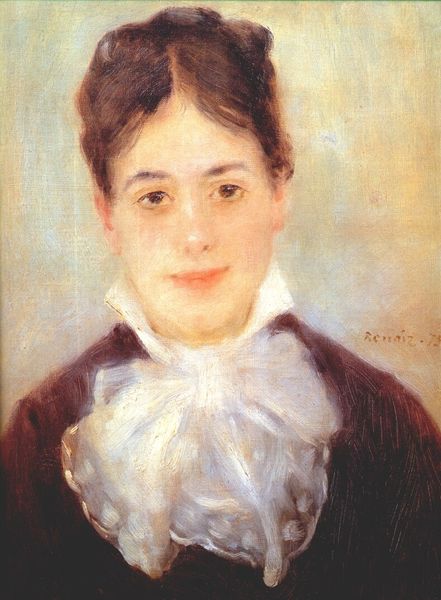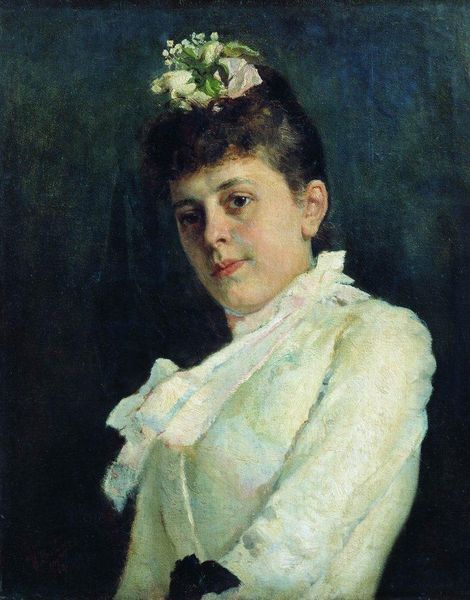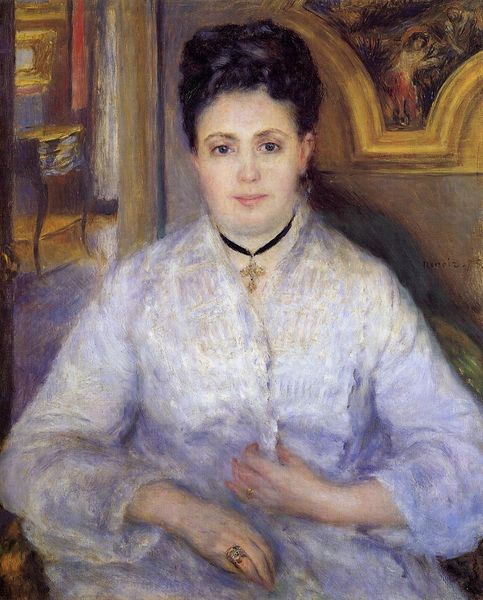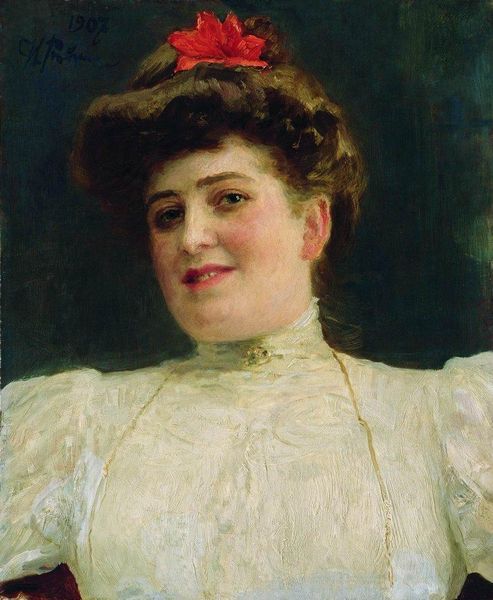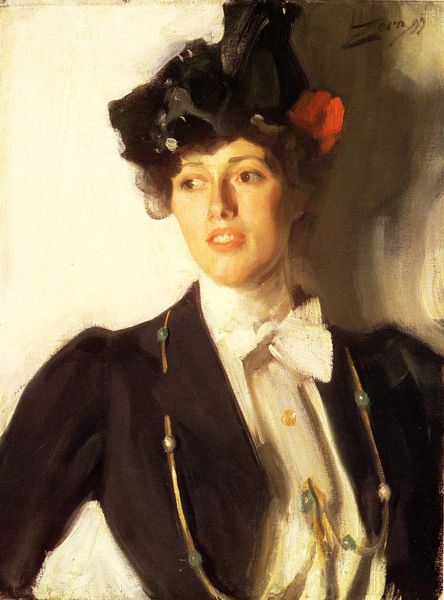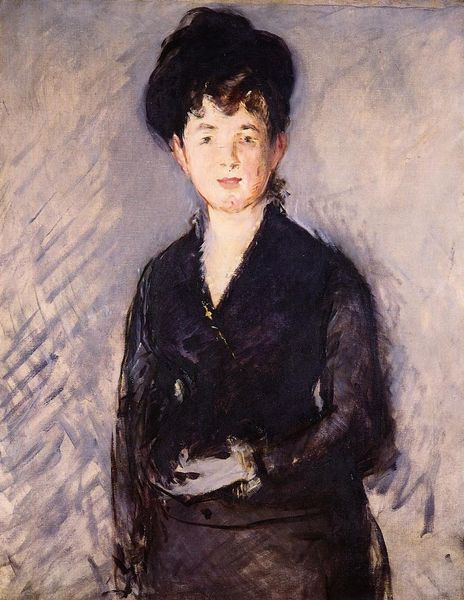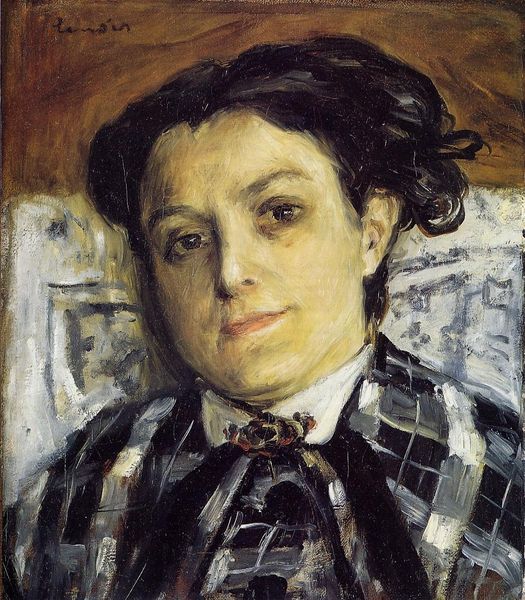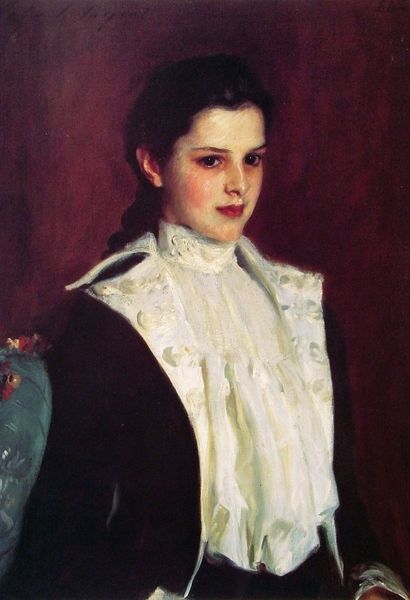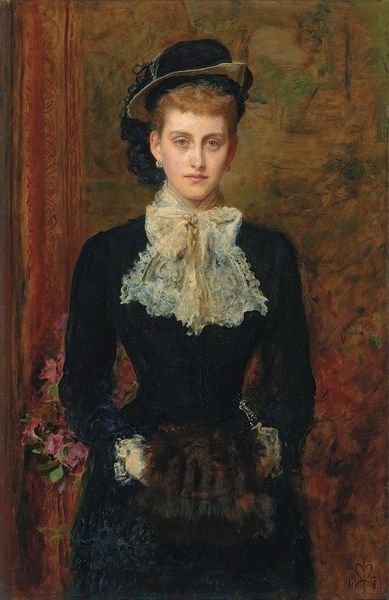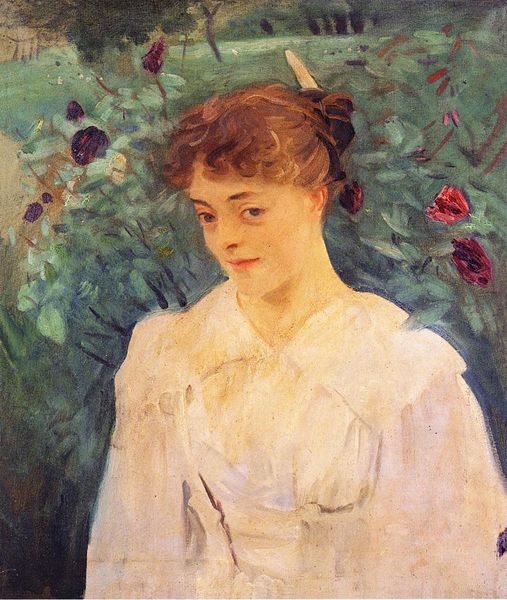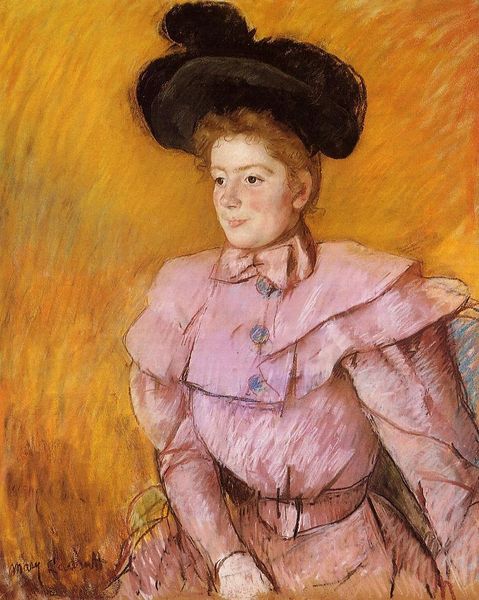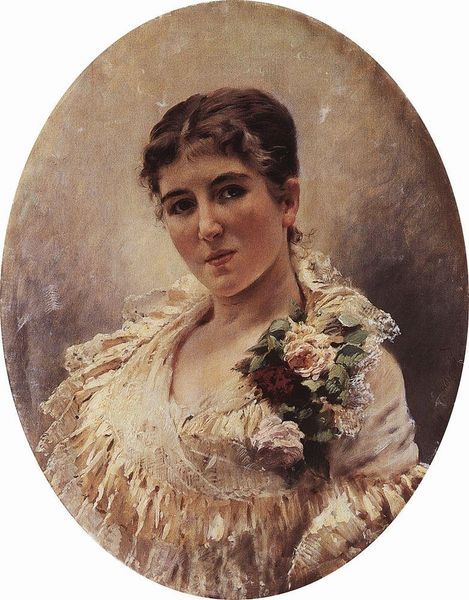
painting, oil-paint
#
portrait
#
painting
#
impressionism
#
oil-paint
#
figuration
#
oil painting
#
intimism
#
realism
Copyright: Public domain
Curator: Immediately striking is the texture in Mary Cassatt's "Portrait of Mrs. William Harrison," created around 1890 using oil paints. There is something subdued yet direct in her gaze. Editor: Indeed. And notice how the application of paint itself contributes to the work’s intimist aesthetic. The rapid, broken brushstrokes, particularly in the blouse, capture the light beautifully, giving a sense of movement and informality, quite different from the conventions of formal portraiture at the time. Curator: Cassatt moved to France and spent most of her adult life in the cultural circles of Paris, even becoming a dedicated Impressionist who exhibited her works among iconic artists like Degas. This is a moment when the visual structures around portraiture were opening for exploration in terms of character, as the sitter could have many public roles within their community. Editor: Precisely. And it’s crucial to see the interplay of these pastel shades—the blues, pinks, and creams that build the form. The brushwork isn't blended traditionally; it creates a vibrant surface that visually activates the picture plane. Consider the darker accents as well, like the strategically placed bows which not only emphasize the woman's figure but add an essential counterpoint in values, highlighting and setting her figure against the ethereal ground behind her. Curator: Portraits allowed women to occupy visibility, to be known as individuals, and not merely as social relations of notable men. Her art gained popularity, especially as affluent Americans bought them and helped cement the status of these compositions on both continents. This helped form museums, personal collections, and critical conversations we benefit from to this day. Editor: And what might be taken at first glance as an ordinary likeness is so masterfully executed through technique. The brushwork itself tells us as much about Cassatt’s creative vision as it does about the model herself. Curator: In sum, “Portrait of Mrs. William Harrison” underscores Cassatt's position as a crucial observer and interpreter of modern womanhood at the cusp of change. Editor: Absolutely. Viewing how Cassatt utilized color, light, and touch gives another layer of understanding that makes experiencing "Portrait of Mrs. William Harrison" all the more rewarding.
Comments
No comments
Be the first to comment and join the conversation on the ultimate creative platform.

